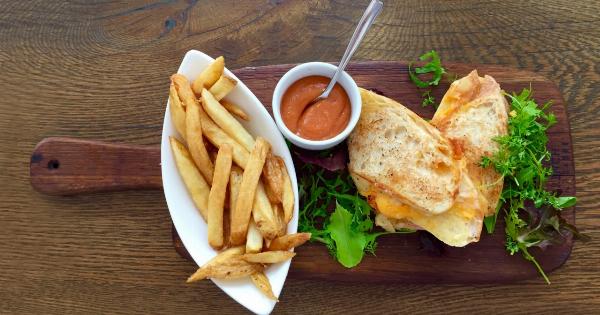Fasting has become increasingly popular as a way to improve health and promote weight loss. While there are many different fasting methods, one common aspect is the fasting period where no food is consumed.
However, breaking the fast properly is just as important as the fasting itself. In this article, we will explore what to eat during your fasting period to ensure optimum health and nutrition.
Understanding Fasting
Before we dive into the specifics of what to eat during your fasting period, it’s important to understand the different fasting methods and their benefits.
Fasting involves abstaining from food for a set period of time, allowing your body to enter a state of ketosis where it burns stored fat for energy. This can lead to weight loss, improved insulin sensitivity, and reduced inflammation.
The Importance of Breaking the Fast
Breaking the fast is a crucial step in the fasting process. It’s important to reintroduce food slowly and mindfully, as your body may be sensitive after a period of restricted eating.
Eating the right foods can help prevent digestive discomfort, stabilize blood sugar levels, and provide essential nutrients.
Hydration is Key
Before we discuss what to eat during your fasting period, it’s important to highlight the importance of hydration. Water should always be your main priority during a fast.
It helps to flush out toxins, aids in digestion, and helps to maintain overall health. Aim to drink at least 8 glasses of water throughout the day.
Nutrient-Dense Foods
When breaking your fast, opt for nutrient-dense foods that provide a wide range of essential nutrients. These include:.
1. Leafy Greens
Leafy greens such as spinach, kale, and arugula are packed with vitamins, minerals, and antioxidants. They are low in calories and high in fiber, making them an excellent choice for breaking your fast.
Try adding a handful of leafy greens to your first meal.
2. Protein-Rich Foods
Protein is essential for repairing and building tissues, as well as maintaining a healthy immune system. Incorporate lean sources of protein like chicken, fish, tofu, or legumes into your first meal after fasting.
These foods will help you feel fuller for longer and provide essential amino acids.
3. Healthy Fats
Healthy fats are vital for brain health, hormone production, and vitamin absorption. Avocado, nuts, seeds, and olive oil are excellent sources of healthy fats and can be added to salads or smoothies post-fast.
4. Fibrous Fruits and Vegetables
Fruits and vegetables high in fiber are beneficial for digestion and maintaining a healthy gut. Berries, apples, broccoli, and carrots are examples of fibrous produce that can be included in your first meal.
Just be mindful of portion sizes, as consuming large quantities of fruit can spike blood sugar levels.
5. Whole Grains
If you choose to break your fast with grains, opt for whole grains like quinoa, brown rice, or oats.
Whole grains are higher in fiber and nutrients compared to refined grains, which can help maintain stable blood sugar levels and keep you feeling satisfied for longer.
6. Probiotic-Rich Foods
Probiotic-rich foods like yogurt, kefir, sauerkraut, and kimchi can help restore and maintain healthy gut bacteria. Fasting can temporarily disrupt the gut microbiome, so including these foods in your first meal can help replenish beneficial bacteria.
7. Herbal Teas
In addition to water, herbal teas can be a soothing and hydrating option during your fasting period. Peppermint, chamomile, and ginger tea are known for their digestive benefits and can help ease any discomfort after breaking your fast.
8. Avoid Processed Foods
While breaking your fast, it’s important to avoid processed foods as much as possible. These foods are often high in refined sugar, unhealthy fats, and additives, which can easily undo the benefits of fasting.
Opt for whole, unprocessed foods to maximize the nutritional value of your first meal.
9. Listen to Your Body
Above all, it is important to listen to your body when breaking your fast. Pay attention to how different foods make you feel, as everyone’s body is unique. Take note of any sensitivities or allergies you may have and adjust your meals accordingly.
10. Time for Intermittent Fasting
Intermittent fasting is a popular fasting method that involves cycling between periods of fasting and eating. It has gained credibility for its potential health benefits, including weight loss, improved metabolic health, and decreased inflammation.
Breaking the fast during intermittent fasting follows similar principles to the general fasting period.
Conclusion
Breaking the fast properly is essential for maximizing the benefits of fasting and ensuring optimal health. By choosing nutrient-dense foods, staying hydrated, and avoiding processed options, you can make the most of your fasting period.
Listen to your body and adjust your meals according to your individual needs. Remember, breaking the fast is just as important as the fast itself!.





























